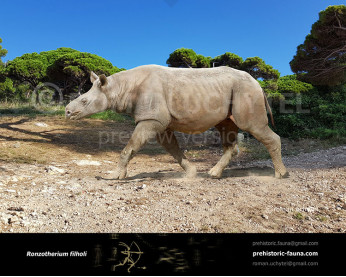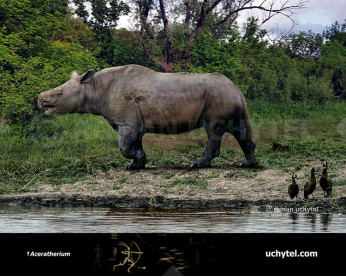Juxia sharamurenense
488488
Juxia (†Juxia sharamurenense (Chow & Chiu, 1964))
Synonyms: Imequinincisoria (Wang, 1976)
Order: Perissodactyla
Suborder: Ceratomorpha
Superfamily: Rhinocerotoidea
Family: †Paraceratheriidae
Time period: Eocene (Asia)
Size: 3,7 m in length, 2 m in height, 800 kg of weight
Typical representative: †Juxia sharamurenense (Chow & Chiu, 1964)
Juxia is an extinct genus of indricothere, a group of herbivorous mammals that are part of the odd-toed ungulate family of rhinoceros and tapirs, was around the size of a large horse. As an early indricothere, this animal had a relatively light body, held by elongated long legs and small skull firmly attached to a relatively long neck. Based on its triangular like teeth and sharp protruding incisors, Juxia was probably a strict browser, feeding on ferns and leaves on branches where most herbivorous mammals couldn't reach. In terms of habitat, Juxia lived in densely lush and tropical forests of what is now China. Though a few skeletons have been found, it is unclear whether this early indricothere was permanently solitary or lived in small social groups, possibly harems. Based on its morphology, Juxia's long legs probably enabled it to run relatively fast for a limited duration. This was probably a defense mechanism against early mammalian predators.
Payment
You may use multiple payment methods to buy image such as credit cards, PayPal and bank transfer.
Juxia (†Juxia sharamurenense (Chow & Chiu, 1964))
Synonyms: Imequinincisoria (Wang, 1976)
Order: Perissodactyla
Suborder: Ceratomorpha
Superfamily: Rhinocerotoidea
Family: †Paraceratheriidae
Time period: Eocene (Asia)
Size: 3,7 m in length, 2 m in height, 800 kg of weight
Typical representative: †Juxia sharamurenense (Chow & Chiu, 1964)
Juxia is an extinct genus of indricothere, a group of herbivorous mammals that are part of the odd-toed ungulate family of rhinoceros and tapirs, was around the size of a large horse. As an early indricothere, this animal had a relatively light body, held by elongated long legs and small skull firmly attached to a relatively long neck. Based on its triangular like teeth and sharp protruding incisors, Juxia was probably a strict browser, feeding on ferns and leaves on branches where most herbivorous mammals couldn't reach. In terms of habitat, Juxia lived in densely lush and tropical forests of what is now China. Though a few skeletons have been found, it is unclear whether this early indricothere was permanently solitary or lived in small social groups, possibly harems. Based on its morphology, Juxia's long legs probably enabled it to run relatively fast for a limited duration. This was probably a defense mechanism against early mammalian predators.

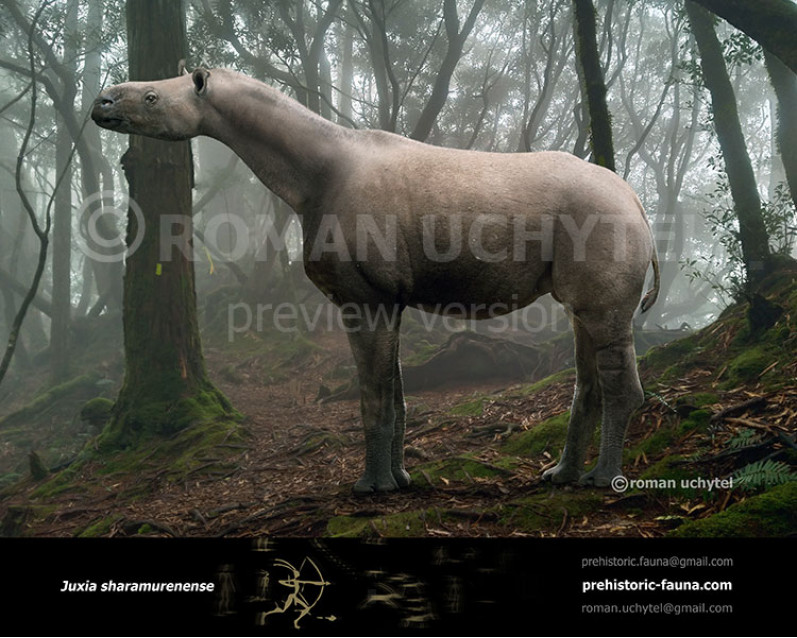
-797x638.jpg)
1-797x638.jpg)
-797x638.jpg)
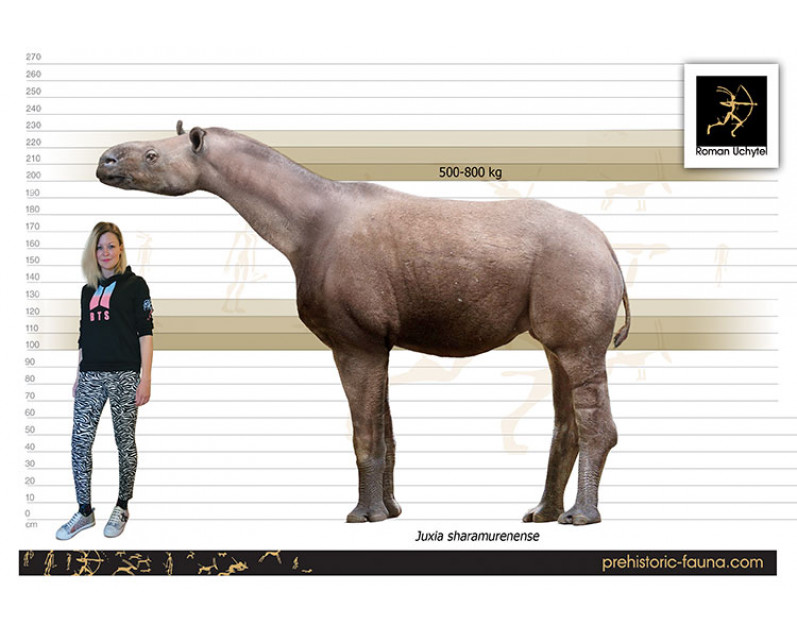

-70x56.jpg)
1-70x56.jpg)
-70x56.jpg)

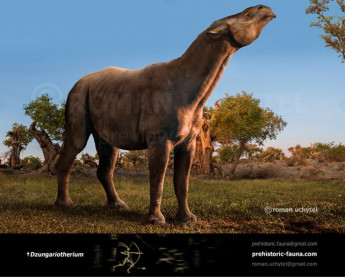
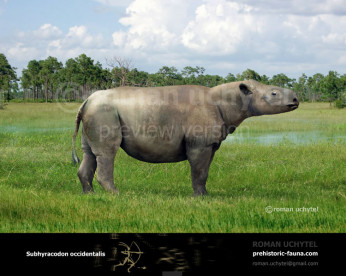
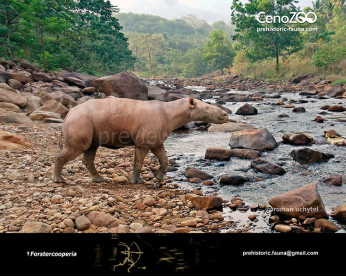
-346x277.jpg)
